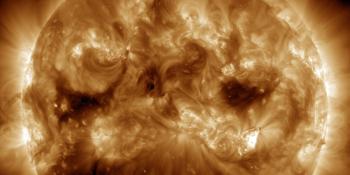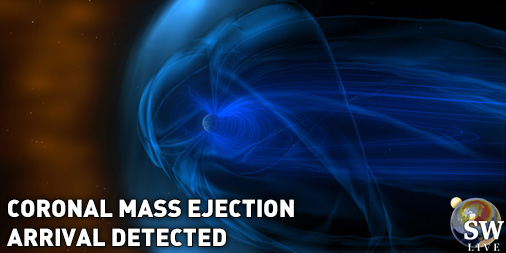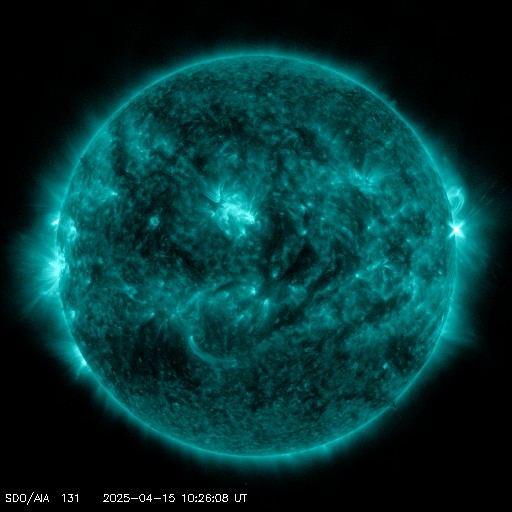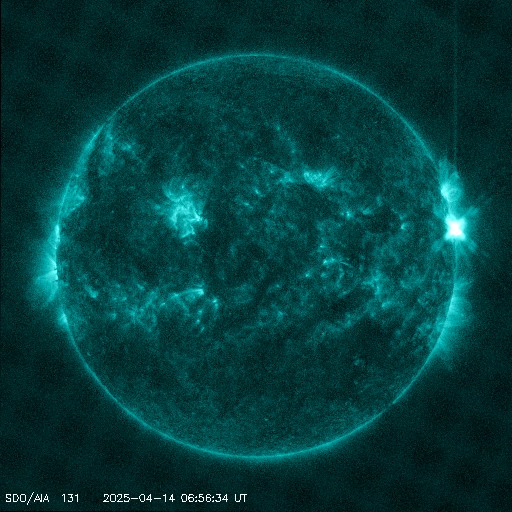Viewing archive of Monday, 28 January 2002
Solar activity report
Any mentioned solar flare in this report has a scaling factor applied by the Space Weather Prediction Center (SWPC). Because of the SWPC scaling factor, solar flares are reported as 42% smaller than for the science quality data. The scaling factor has been removed from our archived solar flare data to reflect the true physical units.
Report of Solar-Geophysical Activity 2002 Jan 28 2200 UTCPrepared by the NOAA © SWPC and processed by SpaceWeatherLive.com
Joint USAF/NOAA Report of Solar and Geophysical Activity
SDF Number 028 Issued at 2200Z on 28 Jan 2002IA. Analysis of Solar Active Regions and Activity from 27-2100Z to 28-2100Z
Solar activity was at low levels. Region 9788 (N18W85)
produced a C9/Sf at 28/0310 UTC. Region 9800 (N07E23) has increased
in size and magnetic complexity to a Beta-gamma configuration with
some mixing in the leader spot. Region 9802 (S16E49) has increased
in magnetic complexity to a beta-gamma configuration and has grown
in area size and spot count. A 25 degree disappearing filament
(S29E18) occurred between 27/2116 and 28/1318 UTC. Three new
regions were numbered today: Region 9804 (S19E27), Region 9805
(N14E64), and Region 9806 (N11E70).
IB. Solar Activity Forecast
Solar activity is expected to be low
to moderate. Region 9800 and 9802 have the potential for M-class
events.
IIA. Geophysical Activity Summary 27-2100Z to 28-2100Z
The geomagnetic field was at quiet to unsettled levels. Greater
than 10 MeV protons have returned to background levels after the
enhancement of 27/1710 UTC.
IIB. Geophysical Activity Forecast
The geomagnetic field is
expected to be quiet to unsettled.
III. Event Probabilities 29 Jan to 31 Jan
| Class M | 50% | 50% | 50% |
| Class X | 10% | 10% | 10% |
| Proton | 01% | 01% | 01% |
| PCAF | green | ||
IV. Penticton 10.7 cm Flux
Observed 28 Jan 260 Predicted 29 Jan-31 Jan 255/260/260 90 Day Mean 28 Jan 224
V. Geomagnetic A Indices
Observed Afr/Ap 27 Jan 004/007 Estimated Afr/Ap 28 Jan 005/006 Predicted Afr/Ap 29 Jan-31 Jan 008/010-010/012-005/004
VI. Geomagnetic Activity Probabilities 29 Jan to 31 Jan
| A. Middle Latitudes | |||
|---|---|---|---|
| Active | 15% | 20% | 15% |
| Minor storm | 05% | 05% | 05% |
| Major-severe storm | 01% | 01% | 01% |
| B. High Latitudes | |||
|---|---|---|---|
| Active | 25% | 25% | 20% |
| Minor storm | 05% | 10% | 05% |
| Major-severe storm | 01% | 01% | 01% |
All times in UTC
Latest news
Latest forum messages
2025/04/12-13 Filament CMEs 2025/04/16 G3 Watch 74Incoming & Unnumbered Active Regions 1716Space Weather Memes 692Filaments and prominences 63AR4062 16
More topicsSupport SpaceWeatherLive.com!
A lot of people come to SpaceWeatherLive to follow the Sun's activity or if there is aurora to be seen, but with more traffic comes higher server costs. Consider a donation if you enjoy SpaceWeatherLive so we can keep the website online!

Latest alerts
16:48 UTC - Coronal mass ejection arrival
CME impact detected - Current Solar Wind Speed 485km/sec - IMF: Bt (strength): 17nT & Bz: -4nT (South).
10:39 UTC - Solar flare
Moderate M1.52 flare from sunspot region 4055
10:24 UTC - Radio Blackout
Minor R1 radio blackout in progress (≥M1 - current: M1.52)
Monday, 14 April 2025
23:15 UTC - Geomagnetic activity
Active geomagnetic conditions (Kp4) Threshold Reached: 23:01 UTC
07:09 UTC - Solar flare
Moderate M4.28 flare from sunspot region 4055
Space weather facts
| Last X-flare | 2025/03/28 | X1.1 |
| Last M-flare | 2025/04/14 | M4.2 |
| Last geomagnetic storm | 2025/04/06 | Kp5 (G1) |
| Spotless days | |
|---|---|
| Last spotless day | 2022/06/08 |
| Monthly mean Sunspot Number | |
|---|---|
| March 2025 | 134.2 -20.4 |
| April 2025 | 128.8 -5.4 |
| Last 30 days | 129.1 -15.1 |






